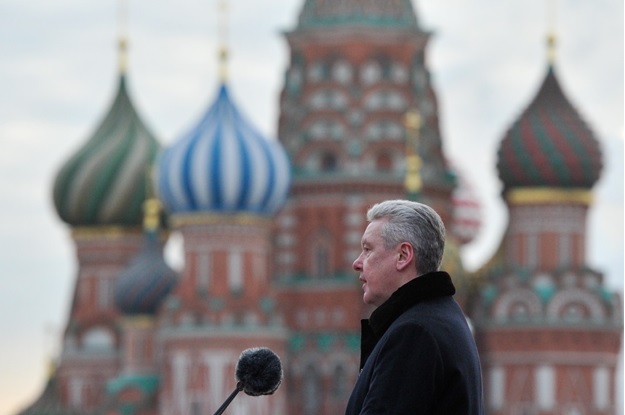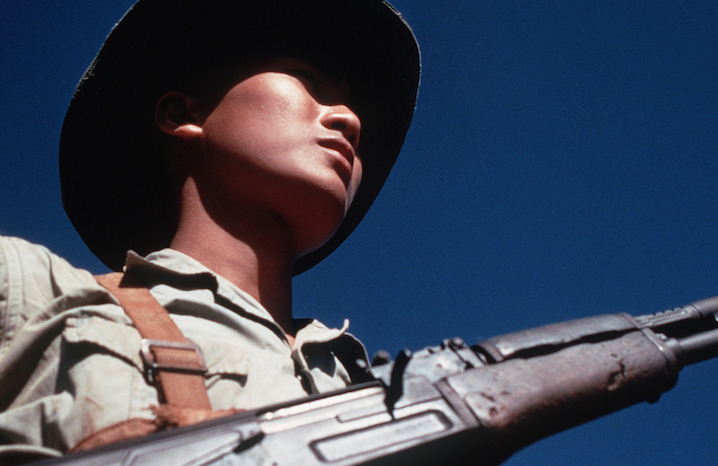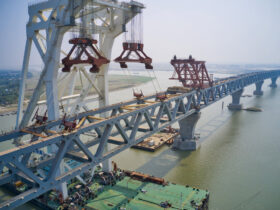
American media outlets like CNN and Fox News routinely cover Putin’s closest advisors, like Foreign Minister Sergey Lavrov, but journalists often overlook one of his closest allies, United Russia party member and Mayor of Moscow, Sergei Sobyanin. He ascended to the post in the midst of corruption allegations and low approval ratings of his predecessor, Yury Luzkhov. To some, the sharp transition was a relief, while others continued to question Sobyanin’s ability to tackle the problems facing a city of over 12 million residents. Now nearing the end of his second five-year term, Sobyanin has roused thousands of Muscovites with his proposed mass renovation plan that would demolish swaths of Stalinist-era apartment buildings. In this regard, Sobyanin closely identifies with Gorbachev’s vision of a post-Soviet democratic Russia. However, Sobyanin’s implementation and subliminal agendas sharply differ from those of the last Soviet president. What’s more, the success of this project will have a direct impact on both Sobyanin’s and Putin’s bid for reelection in 2018. As Putin’s close political ally, Sobyanin must secure the loyalty of city residents for United Russia. He will soon find out that this is not an easy task.
Perestroika in the 1980s and 90s
The word “perestroika” in Russian translates to “restructuring or rebuilding,” but many Russians today know it as the period between 1986 and 1991 when Soviet leader Mikhail Gorbachev unveiled a plan to modernize a stagnant and primitive Soviet Union. In response to the public’s longing for the same social freedoms as the West, Gorbachev democratized the Communist Party. These drastic changes created a rift in the party, which had long been firmly set against capitalist ideas like individualism. In 1991, a group of orthodox party members staged a coup that failed to oust Gorbachev but further escalated tensions within the government.
The short five-year transition period from staunch communism to a partial democracy was difficult for the majority of the populace. While the agricultural sector underwent privatization, store shelves remained empty and food could only be purchased with ration cards. Newspaper stands no longer contained the predictable, filtered news of the Communist Party. Now Soviet citizens had the chance to familiarize themselves with foreign ideas and formerly taboo topics, some of which directly opposed and even upended their worldview. For example, the new and free press under Gorbachev began to document criminal acts within the Soviet Union which previously “would have conflicted with the media’s propaganda function of depicting Soviet society as safer and more crime-free than the capitalist world. ” Although the populace was forced to cope with the uncomfortable democratization of their environment, Gorbachev’s reforms replaced a broken Soviet system with a more democratic government.
Scaling Down
Putin’s agenda does not include political and economic reforms as drastic as those enacted by Gorbachev. In fact, his regime has abandoned Gorbachev’s democratic vision of Russia and facilitated the resurgence of a corrupt and power-hungry bureaucracy. Although a one-party system no longer officially exists, Putin’s United Russia party, which holds the majority of seats in the Duma, the Russian parliament, is the only party with any real authority in legislative matters. To satisfy Western demands for democracy, Russia continues to elect its presidents, cabinet members, and parliamentarians, but even these so called “elections” are not as fair and free as they are purported to be.
Many scholars and politicians alike had high hopes for Putin’s ability to democratize the oligarch-infested government that Yeltsin had left behind. Drastic bureaucratic reforms certainly occurred; notably, he created seven federal districts to centralize power and dismissed many of Russia’s chronically corrupt civil servants. However, Putin quickly filled these vacancies with his KGB cronies, who continued to embezzle and steal just as actively as their predecessors. Today, Putin’s bureaucratic armada is so stained by corruption that only a complete regime change could wipe it out.
However, Sobyanin has not completely abandoned Gorbachev’s democratic pipedream. Elected for his promises to make Moscow a more comfortable city to live in, in 2013, Sobyanin followed through by initiating an expensive and tedious reconstruction project of Moscow’s busiest streets and public spaces. His vision is to “transform a 12 million-person post-Soviet megacity into a sleek environment to rival European capitals.” The driving inspiration of this project is the Western-style “new urbanism,” which focuses on open public spaces that “enhance community connections and alternative transportation modes while de-emphasizing the automobile.” Just as Gorbachev sought to reinvent the political and social climate, separating Russia’s Soviet past from its democratic future, Sobyanin is seeking to redefine a city stained with Cold War-era prejudices and dated philosophies by transforming it aesthetically. However, his implementation of these agendas is problematic. Open squares and walkable streets in Europe were designed to encourage and allow people to congregate, protest and voice their opinions in a common, open space. The irony of Sobyanin’s project is his concern for only the appearance of democracy rather than its real application in urban life. But as it is, aesthetic democracy has been a common theme ever since Putin took control of Yeltin’s crippled administration.
Sobyanin, as a close ally of Putin and United Russia party member, is tapping into the standard Kremlin narrative as he continues to mask his autocratic agenda with claims of “democratization of city streets and squares” and “abandonment of Russia’s dated, Soviet past.” Sobyanin’s vision for democracy could not deviate more from that of Gorbachev.
No Vote, No Problem
Moscow architect Eugene Asse stated that “the idea that you can create democratic-looking spaces without actual democracy in them is worrisome,” and this is exactly the flaw with Sobyanin’s plan. When he was reelected in 2013, the din of drills and bulldozers enveloped the entire city. The first points of renovation were the city’s historic boulevards and wide pedestrian walkways. Large portions of the city were blocked off and public transportation in these areas was either rerouted or cancelled, all without any approval from city residents. In his attempt to emulate the “new urbanism” of European cities, Sobyanin completely circumvented the need for approval from the populace. Herein lies the answer to the suspiciously fast pace of the project. While wanting to modernize the city, abandon repressive Soviet relics, and give public spaces back to the people, Sobyanin is only contradicting himself by not disclosing such matters to his electorate.
Though Sobyanin’s methods are disappointing, they are not surprising. With United Russia holding 343 out of the 450 seats in the Duma, it will prove increasingly difficult to introduce truly democratic initiatives within the city. Gorbachev’s vision of a socially democratic Russia has not been realized under Putin’s autocracy. Kathy Lally of The Washington Post noted that unlike the country’s European neighbors, Russia’s “elections are not fair, courts are not independent, political opposition is not tolerated and the reformers are widely blamed for what has gone wrong”. In this climate, any attempts at democratizing the country’s capital, let alone the country, will be futile.
Destroying the Past, Angering the Present
Within the last few months, Mayor Sobyanin unveiled a plan to demolish Soviet-era homes of more than 1.6 million Muscovites. Some of these apartment blocks were built in hurry under Khrushchev’s leadership, while others stood the test of time under Stalin’s firm regime. Originally Sobyanin embarked on this project to boost his own ratings as well as those of the United Russia party for the next city elections in 2018. However, the backlash has been overwhelming. In May, thousands of protestors and property owners took to the streets to protest Sobyanin’s “renovation plans.” City officials have been accused of “allying with construction magnates to ride roughshod over citizens’ property rights enshrined in the Russian constitution.” Although Sobyanin has promised to relocate residents into homes of equal value and size, his words have been met with great skepticism. Although the original motives to separate Russia’s Soviet past are commendable, the execution is poor. This may be the final straw for many Muscovites as they decide the fate of their city in 2018.
The views expressed by the author do not necessarily reflect those of the Glimpse from the Globe staff, editors or governors.








